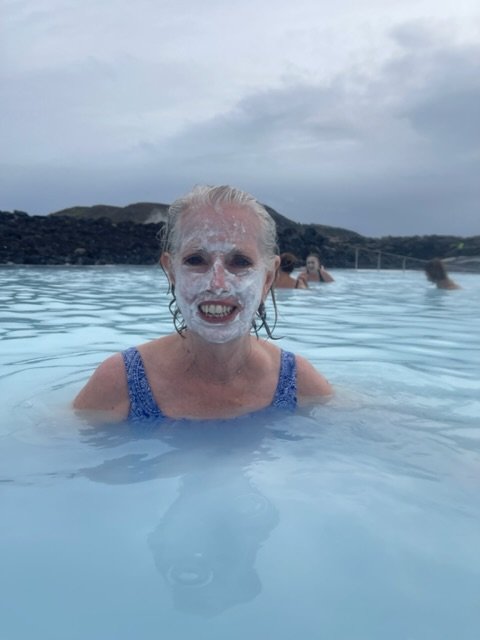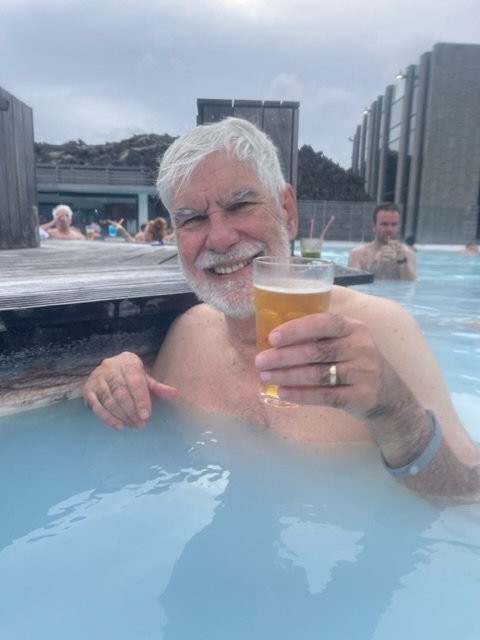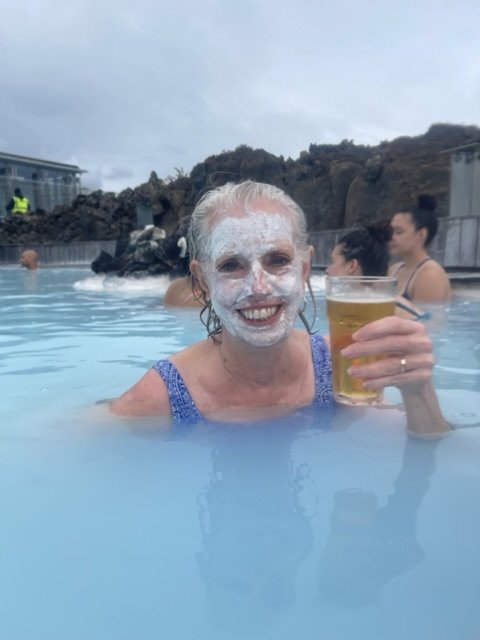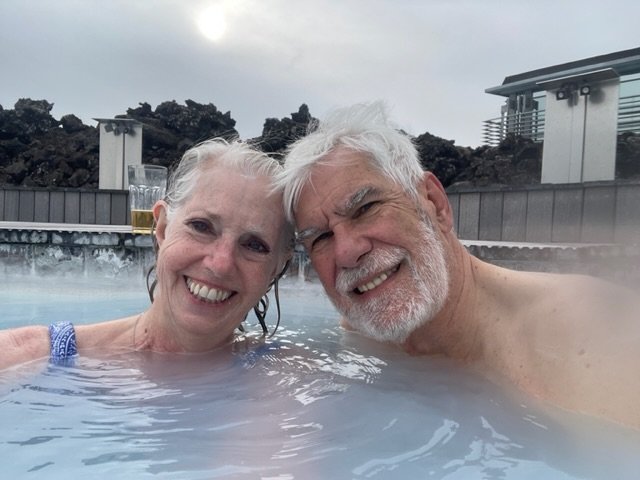We were up bright and early for our bus transfer to the airport to pick up our rented car. Checkout from the ship was seamless, and we arrived at the airport around 8 am and picked up our car. We decided to drive the Reykjanes peninsula on our first day of touring, as I had already mapped out the sites to see.
Our first stop should have been the sheep shelter – round in shape and constructed from lava rocks. It’s considered to be a few centuries old, but alas, we weren’t able to find it.
Trying not to get discouraged that our first site couldn’t be found, we continued on to stop 2 – Kalfatjarnakirkja Church. This church was consecrated in 1893, and was the largest rural church in the country when it was built.
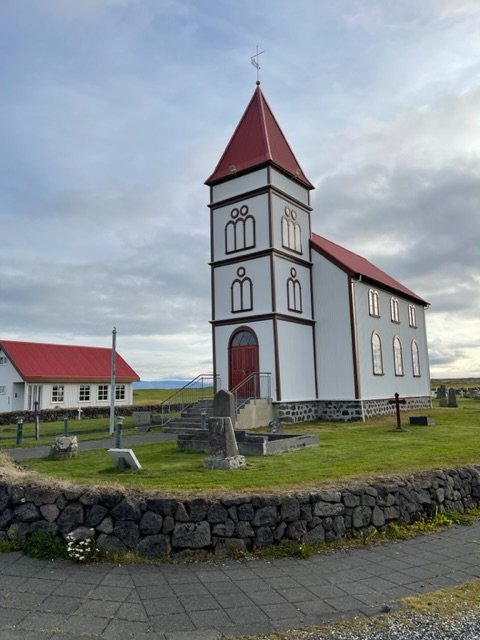
The next stop was the Stekkjarkot peat houses, fine examples of traditional turf homes. The houses were locked when we were there, but we were able to peek inside and see what life must have been like when people lived in these homes. The walls and roof are covered in thick turf which kept the relentless winds from blowing in. And believe me, The winds are relentless!!! Interestingly, only three families lived in the turf houses between 1855 and 1924.
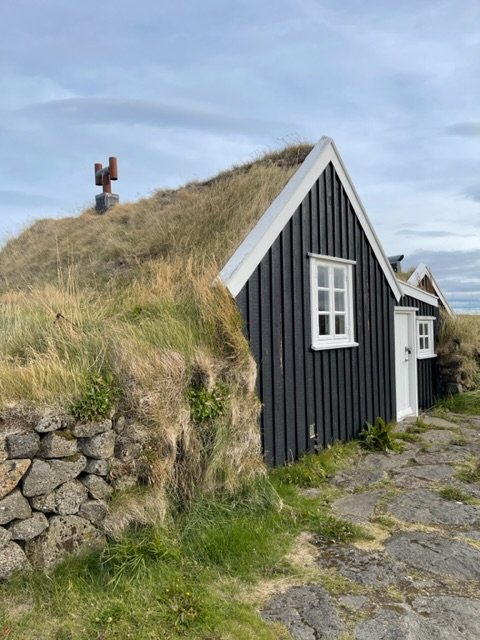
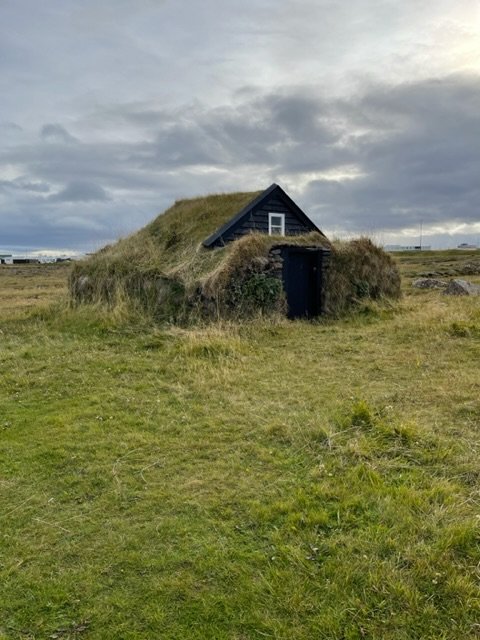
Stop 4 was the Holmsberg Lighthouse, which was tricky to find as it is hidden behind a stone recycling plant. The bright orange color of the lighthouse must have been very visible for the ships at sea as they made their way through the crashing waves.
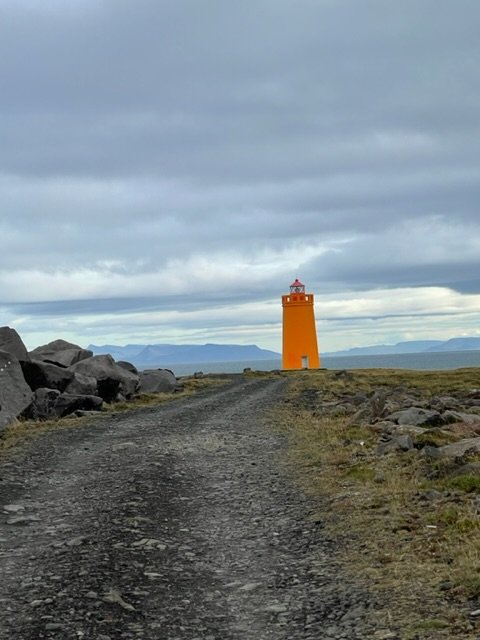
Our next stop was a fun and whimsical one. It’s where the Giantess lives. We followed the huge footprints, which brought us to her front door, where her rocking chair was perched outside. The Giantess was in the house, and we saw her bed, her dress, her shoes, and her toothbrush.
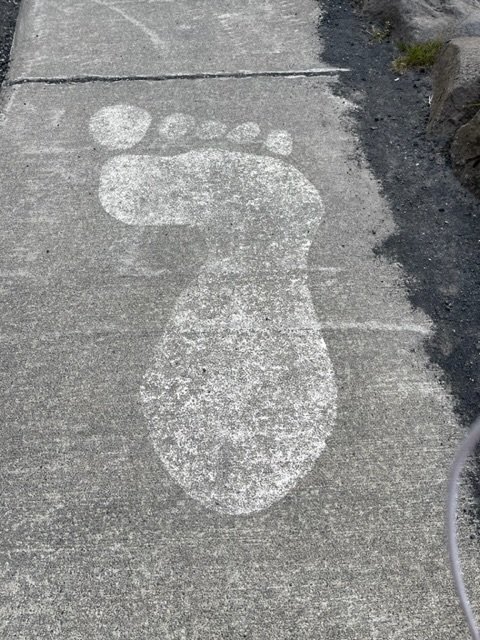

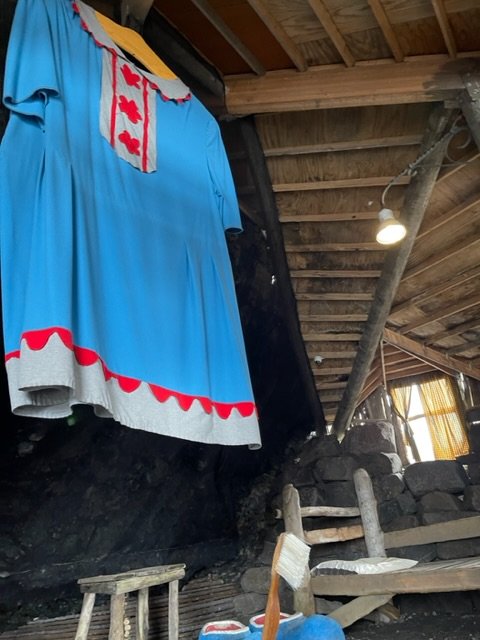
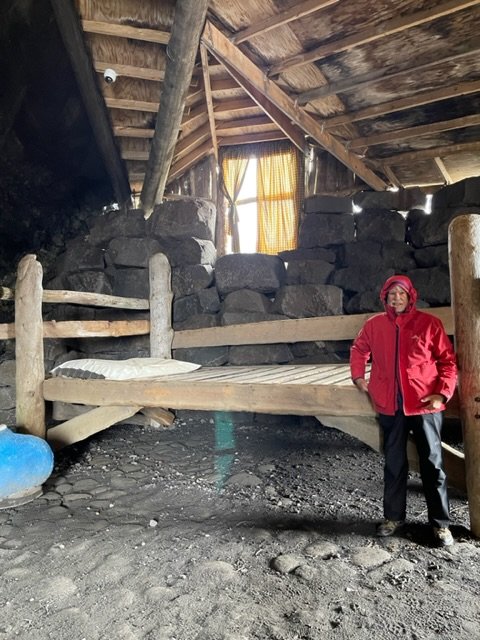
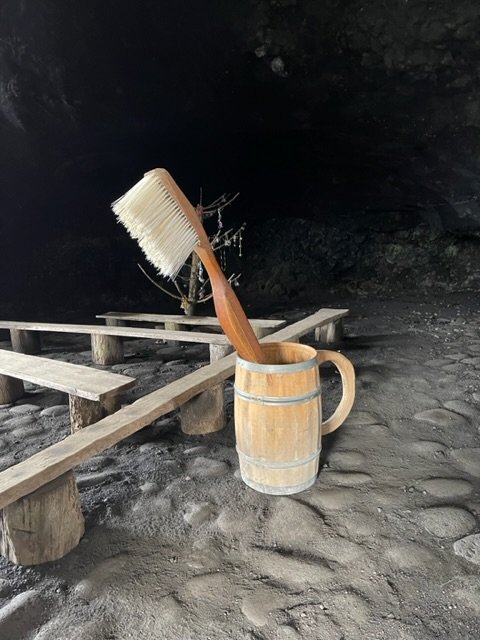
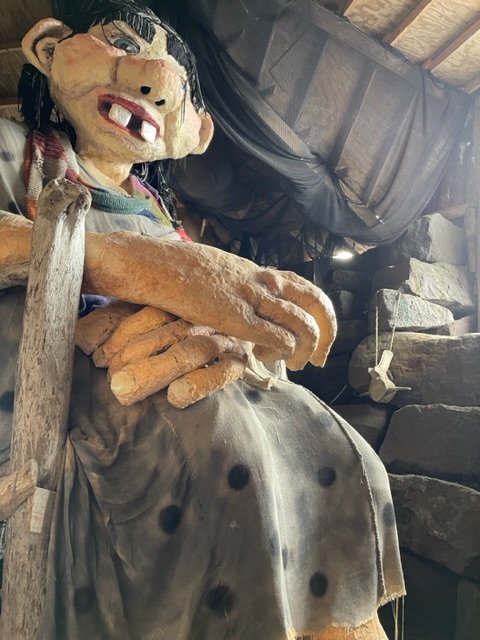
The 6th site we drove to was actually two sites in one. There were two lighthouses, one older than the other. The smaller lighthouse was often not visible in a storm, so a new one was built in 1944.

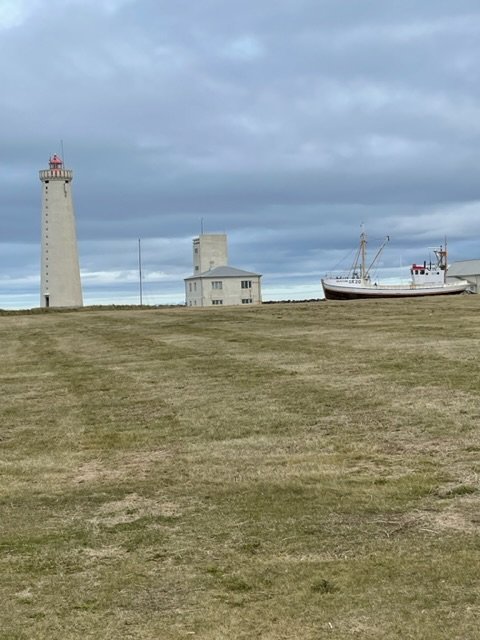
The church at Hvalsnes was the next stop. This beautiful church was consecrated in 1887 and was completely built of carved stone collected from the local plentiful area of rock. The church is still operating today and fits 100 people. There is a graveyard right next to the church and we walked through and saw many recent graves as well as graves from years ago. There was a little grave surrounded by a picket fence. I read the inscription on the tombstone and it was for a little one who has only lived one day. Very sad.
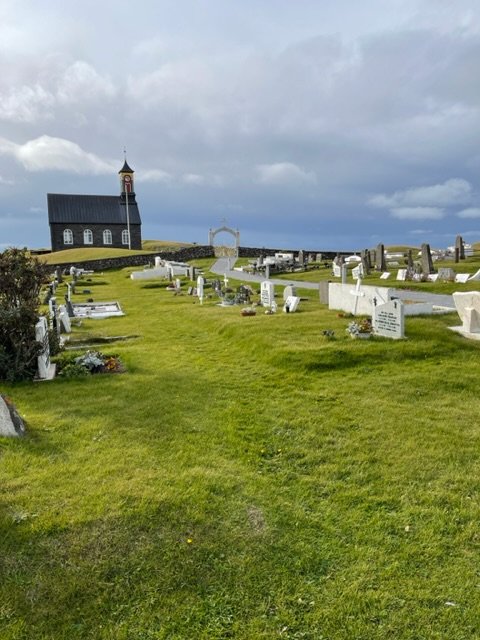
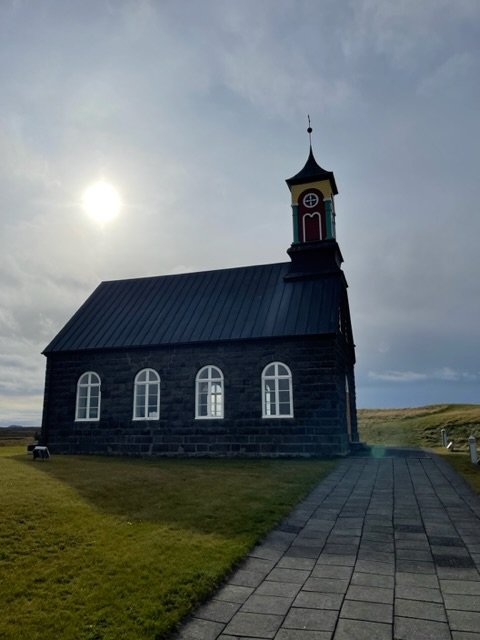

We then drove to the Stafnes Lighthouse which was built in 1925. The Stafnesviti lighthouse is a bright yellow lighthouse and stands amid homes and barns, where we saw horses grazing in the field. Right by the path to the lighthouse, there is a monument to a ship that ran aground in 1928. 15 of the crew drowned, but 10 were rescued.

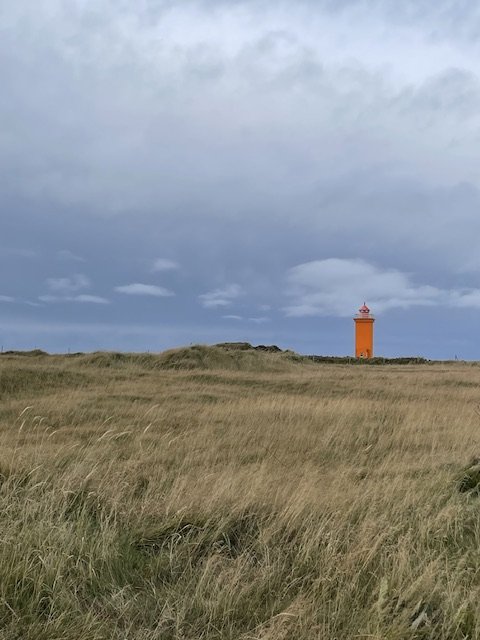
The Bridge Between the Continents was our next site to see. It is a symbolic footbridge across one of the fissures marking the boundary between the North-American and Eurasian tectonic plates. The wind was howling, but undaunted we walked over to the middle of the bridge to say we have stood on both continents at the same time.
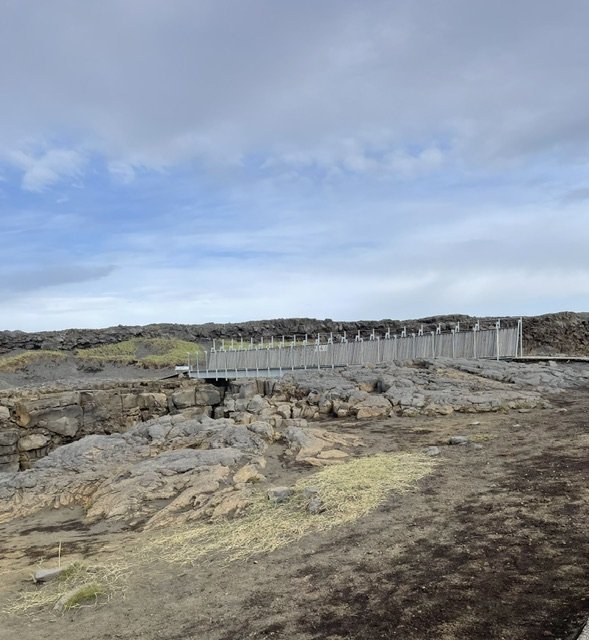
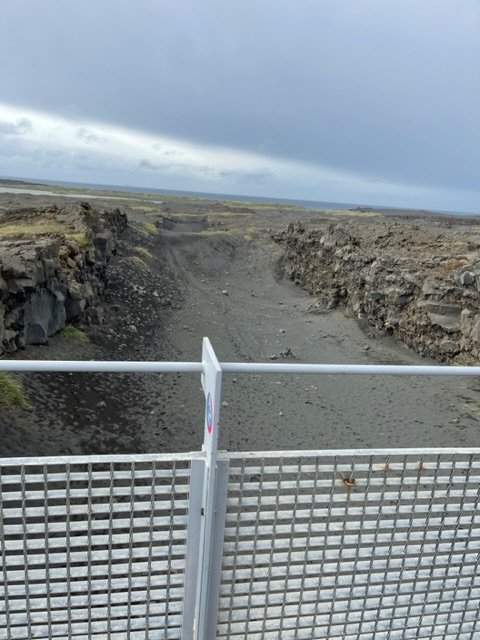
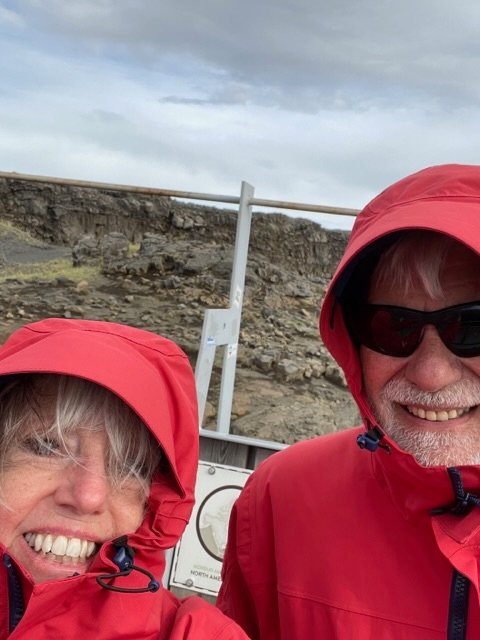
Standing between the continents
Our next stop was to the Reykjanesviti Lighthouse, the oldest lighthouse in Iceland. It was first built in 1878. It was destroyed by an earthquake, and the current lighthouse was built between 1907 and 1908. Due to erosion, it’s expected that the lighthouse will be rebuilt in the near future.
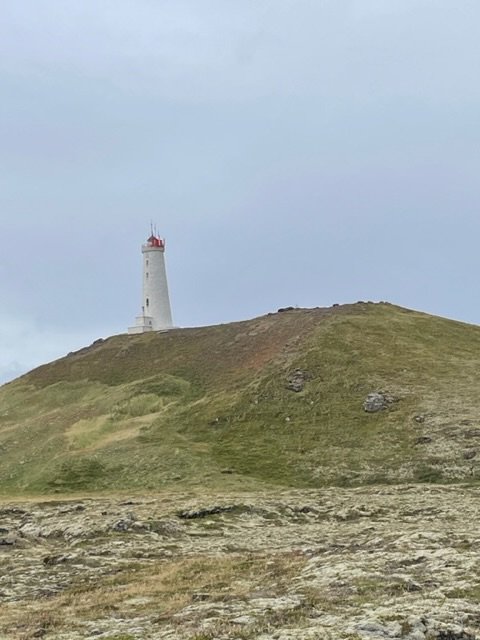
The next stop was truly awe inspiring. The Brimketill Lava Pools, with waves pounding the shore and splashing to new heights, was unbelievable. The wind was blowing, but we still couldn’t help but stand in awe of how powerful the ocean can be. The cliffs are extremely dangerous as you could be swept away with the angry sea so we were warned to stay on the path. The folklore surrounding this lava pool is that a giantess used the pool to wash her clothes and to bathe in.
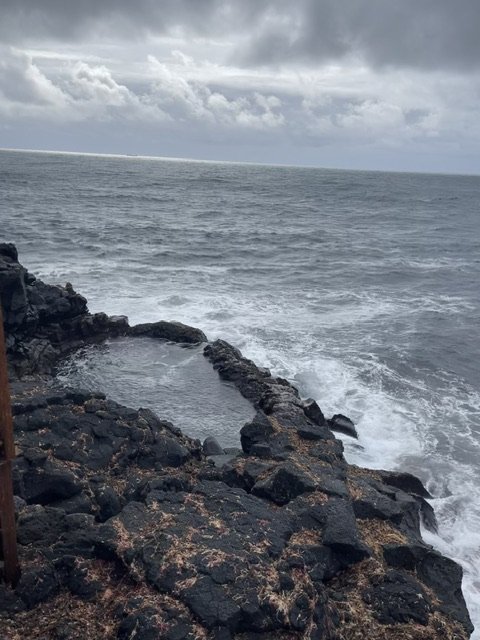
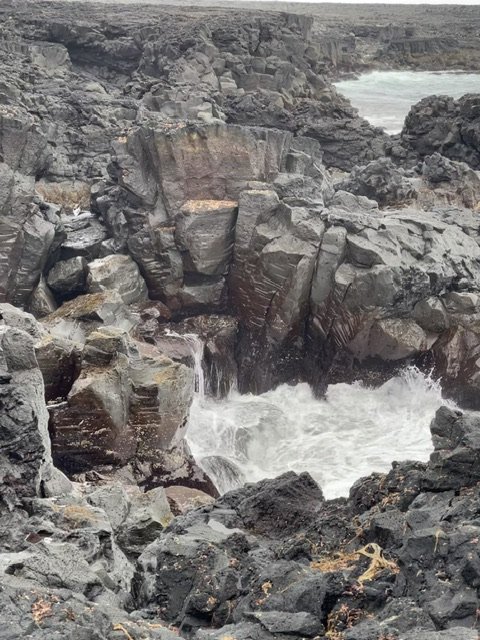
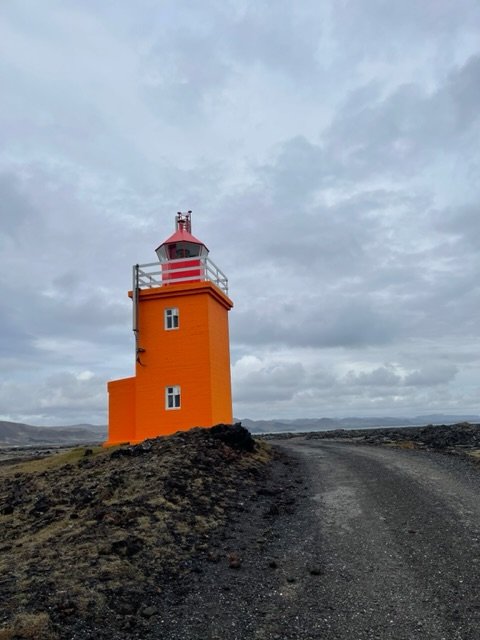
Above is a picture of the lighthouse at Hopsnes, an area that resulted from an eruption of a row of craters around 2,800 years ago. Today, the famous bright orange lighthouse is one of its main attractions. The bottom of the lighthouse is orange, while the tower is bright red, which makes it stand out as a vibrant beacon.
We saw shipwrecks lying on the ground near the lighthouse. They were abandoned during the 20th century. Hopsnes used to be a prosperous fishing village, but now only remnants of it remain.
This area, if conditions are right, is prime viewing for the northern lights. A lot of cloud cover was predicted for tonight, so we knew we wouldn’t be driving back to try to catch a glimpse of the aurora borealis.
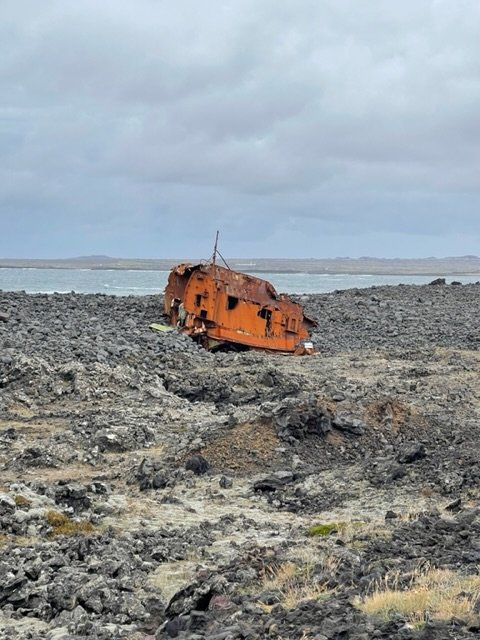
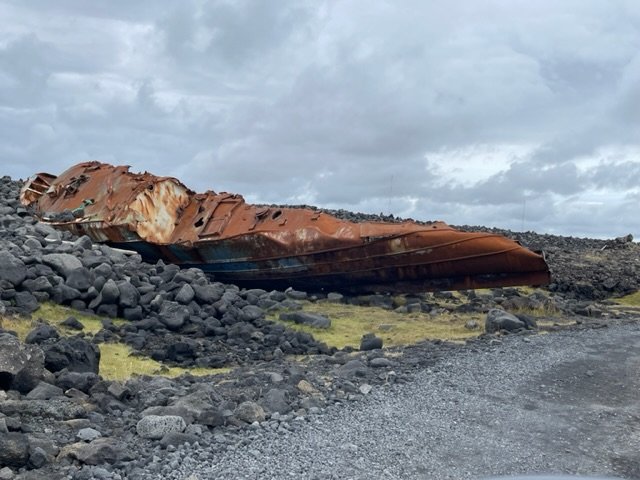
The shipwrecks at Hopsnes.
We were getting hungry so we had a late lunch at Cafe Bryggihan. The cafe is known for its lobster bisque, so of course we had to try it. It was very good, with a distinct flavor that was hard to identify. We also had fish and chips and Allan also had the famous Icelandic hotdog. Apparently, Anthony Bourdain touted the Icelandic dog as the best one he’s ever eaten. Allan wasn’t as impressed. He said “Give me a good old ballpark frank any day!”
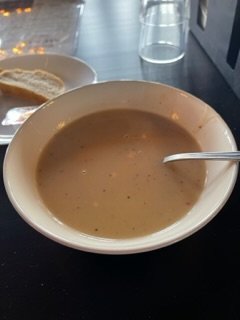
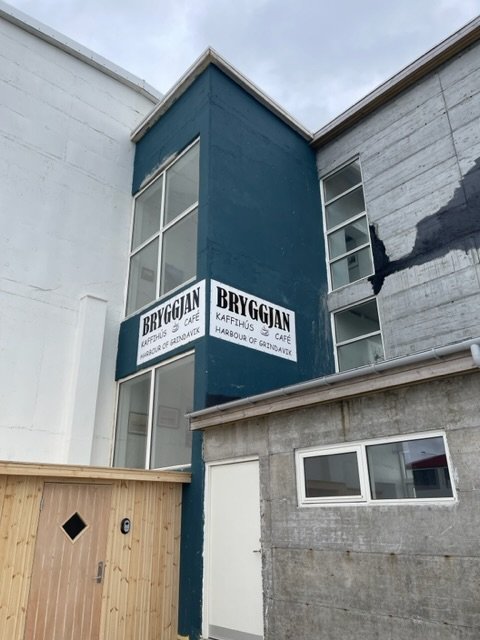
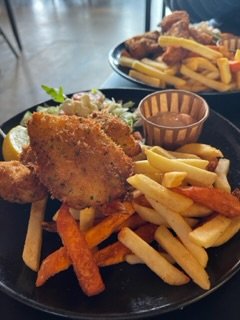

We finished off our tour of the Reykjanes Peninsula with a dip in the Blue Lagoon. You had to shower before entering the lagoon and they told us to put lots of conditioner in our hair at the same time. The lagoon was heavenly. At least it was while you were submerged in the waters!!! When you stood up, wowser was it cold!! The wind chilled you right to the bone!!!
We enjoyed a glass of beer and I had a mud facial. We lingered in the lagoon for about an hour, then quickly ran back inside (remember… it was really cold and windy, to say nothing of our soaking wet bathing suits), grabbed a towel, took a quick shower again, and then we drove the 45 minute drive to Reykjavik, to check into our hotel.

